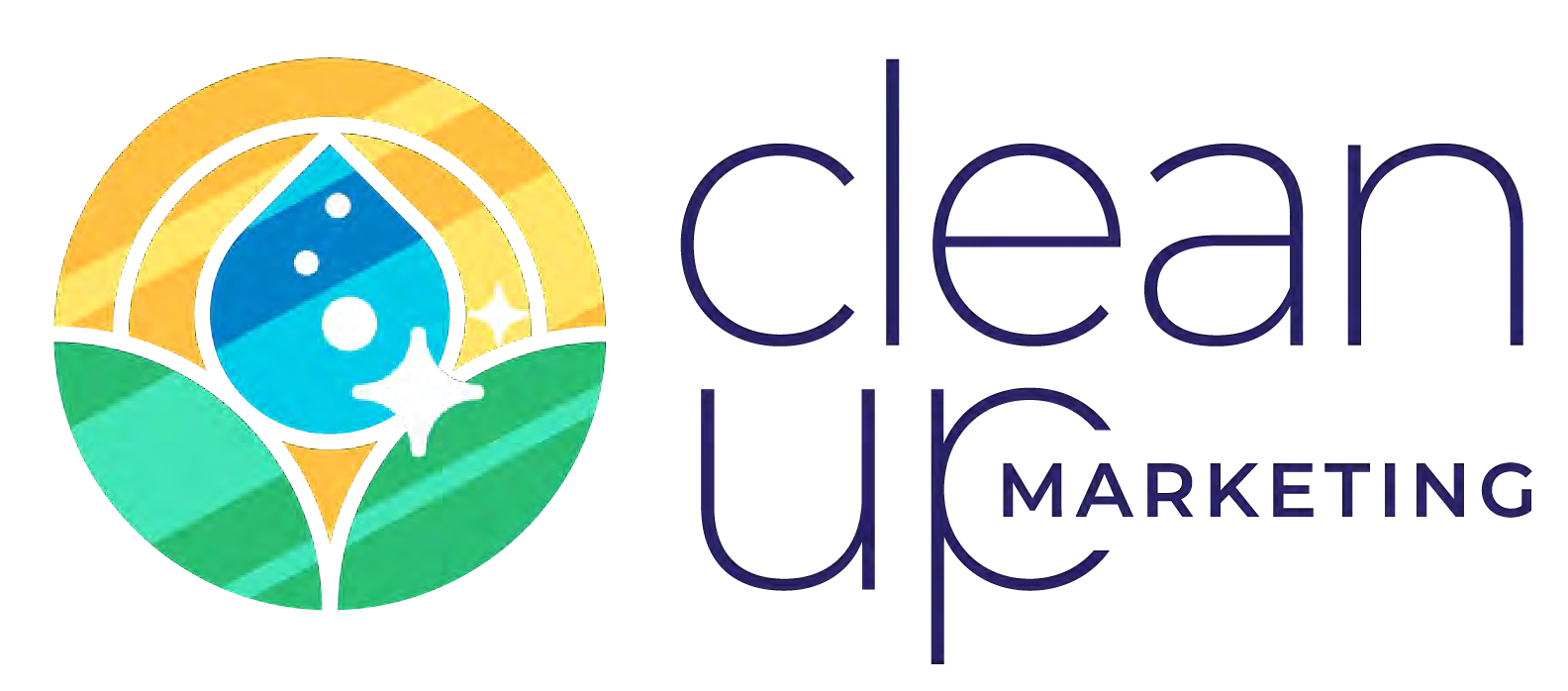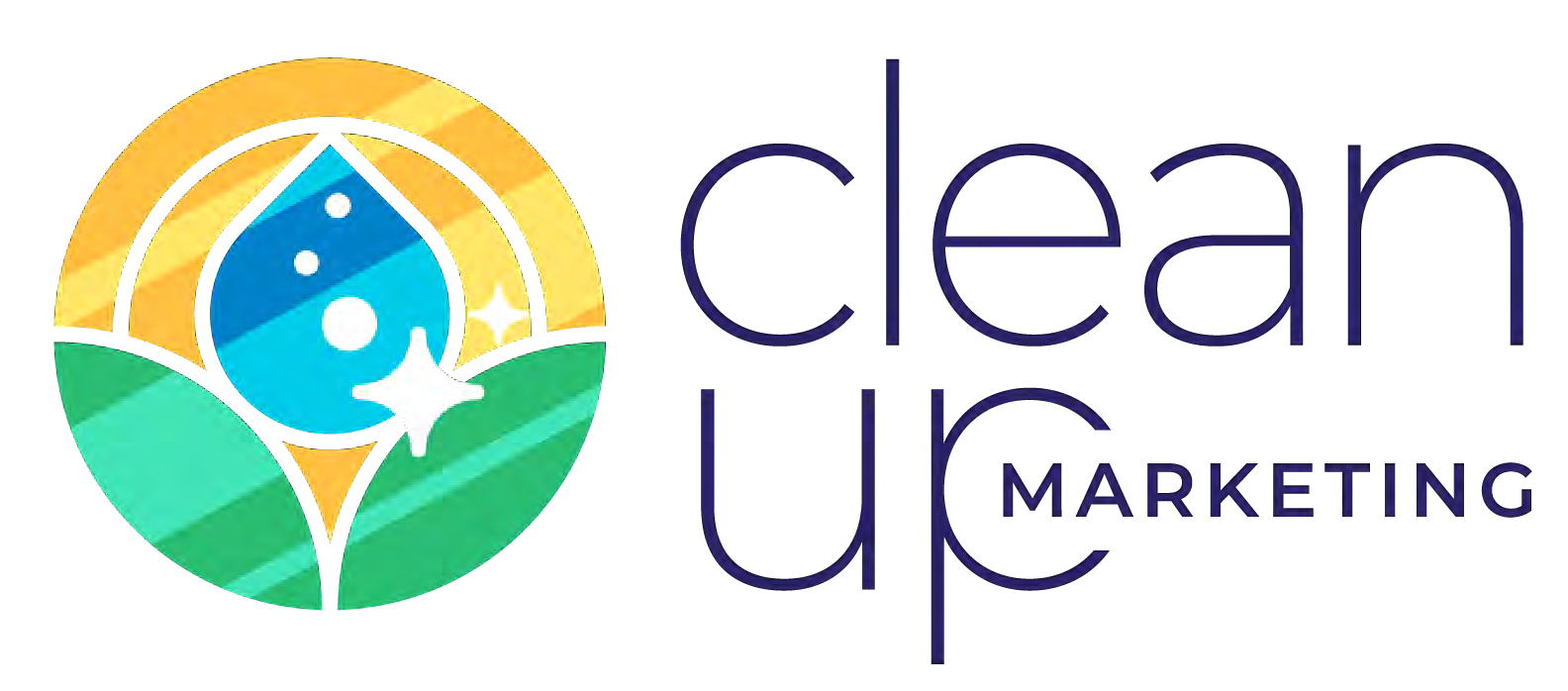Cleantech Funding Is in Short Supply—Here’s How You Stand Out
Michael Grossman • March 24, 2025
The demand for cleantech solutions to create a more sustainable habitat for humanity has never been higher, but in the last two years funding in the private sector has been scarce due to high interest rates and U.S. election uncertainty. Meanwhile, the Trump administration is freezing billions of dollars of grants, loans, and tax credits. If that wasn’t scary enough, last week Bill Gates announced he was shutting down the policy arm of his Breakthrough Energy organization.
As global investment in climate tech faces slowdowns, startups must work harder to capture the attention of investors. With only $85 million raised by Aligned Climate Capital’s latest fund, compared to the billions that tech startups attract, it’s clear that capital for cleantech is limited and highly competitive.
So, how can your cleantech startup stand out in a crowded market? Let’s dive into the key steps to attract funding in an increasingly competitive landscape.
1. Have A Unique Story
The roughly 300 VC’s, accelerators, incubators, and angel funding groups who invest in early stage cleantech and adjacent industries in the U.S. receive dozens of Power Point pitch decks every month. What that means is you need to light up their limbic brains if you want to get past the first hurdle.
I guarantee you that when they hear “We’re solving climate change” or “Our technology is better, faster, or cheaper than what’s on the market,” an investor’s first thought is “It must be Tuesday.”
That’s not to say that mission, vision, and values aren’t important. They are, but that isn’t likely what makes your startup unique.
And to be clear, what you do isn’t what makes your story unique. Right now, hundreds of companies are trying to build better batteries, whether it’s using lithium, sodium, nickel or some other element of the Periodic Table, and all of them involve advanced chemistry and materials science that was unthinkable even ten years ago. The problem is that your audience of investors has heard essentially the same pitch for funding from all of your competitors. If interested, they will conduct their due diligence on your science and engineering, but those are the poker equivalent of table stakes. It’s not what will get the money deposited in your bank account.
Case Study:
ChargerHelp
was started by a young female entrepreneur who recognized that one of the seemingly intractable hurdles towards EV adoption isn’t about battery materials or car prices, but the unreliability of EV charging stations. Any investor who owns an EV has pulled up to a public charging station only to depart in frustration and despair because the charger was broken or offline. She created an operations and maintenance company that maximizes EV charging station uptime and staffed the company with technicians from disadvantaged communities, paying for their training.
ChargerHelp has raised $21 million, including a $17 million Series A round led by Blue Bear Capital because the CEO, Kameale Terry, told a compelling story that addressed a problem that many of her investors had personally experienced.
2. Solve A Specific Problem
In the last year, I’ve encountered a seemingly endless line of startup CEO’s who want to capture carbon, produce green hydrogen and sustainable aviation fuel, clean up PFAS, and use AI to solve all of the world’s problems. They are all smart, credentialed, and altruistic, but the few of them who will raise enough money to scale all have one thing in common: they can point to a specific problem only they can solve.
Case Study:
While I don’t love the name TLS Geothermics, even a non-techie like me understood their value proposition within seconds.
Geothermal energy could be a reliable supply of clean energy in the U.S. What’s holding the industry back is the expense of finding those sources of heat deep below the earth’s surface. TLS Geothermics pioneered AI-based predictive analytics to reduce the costs and reveal untapped sources of geothermal resources.
Because the Department of Defense has recognized the applicability of their analytics model to providing clean energy for military installations around the globe, investors won’t have to connect many dots to see returns from both privately owned utilities who don’t want to saddle ratepayers with more expensive infrastructure and from government contracts.
3. Focus on Scalability and Speed to Market
Investors want to know that your technology is not just innovative but also scalable. Aligned Climate Capital’s funding strategy prioritizes companies that can move from pilot to full-scale deployment quickly. This means startups must demonstrate how they can rapidly expand without excessive capital expenditures or long commercialization timelines.
How to Apply This:
• Develop a clear path to scale, whether through licensing, manufacturing partnerships, or modular technology solutions.
• Use case studies from successful pilot programs to show how your technology can be deployed across multiple industries or locations.
• Be transparent about your cost structure and show how your solution can be profitable at scale.
4. Target the Right Investors
Know your audience. Some funds focus on specific verticals, such as energy storage, grid modernization, or circular economy solutions. Aligned Climate Capital, for instance, directs its investments toward renewable power, electrification, and decarbonization technologies.
How to Apply This:
• Research investor portfolios to ensure your company aligns with their focus areas.
• Tailor your pitch to highlight aspects of your technology that match investor priorities.
• Build relationships with investors early—don’t wait until you need funding to start conversations.
5. Mission: Must-have
While financials and scalability are critical, investors also need to believe in the mission. Cleantech startups that successfully attract funding often do so by framing their solution as a must-have rather than a nice-to-have. Investors are more likely to fund a company that presents itself as essential to solving a pressing environmental or economic issue.
How to Apply This:
• Frame your company as solving an urgent problem, whether it’s grid stability, energy security, or emissions reduction.
• Use storytelling in your pitch to make the problem and solution relatable.
• Demonstrate momentum—whether through customer adoption, regulatory tailwinds, or industry recognition.
Case Study:
The paints, coatings, and adhesives we use in our day to day life are full of toxins, and their disposal creates even more environmental damage. Enter Lakril Technologies. Chris Nicholas and his team have invented a way to replace the petrochemicals used in these products with bio-based sugars. You don’t have to posess a PhD to recognize there will be an early adopter market for their technology from some of America’s largest companies like 3M who want to show their commitment to sustainability and understand the days of petro-based chemicals are numbered.
Final Thoughts
Cleantech funding is in short supply, but the right strategy can help your startup stand out. By proving your business model early, aligning with institutional capital, prioritizing scalability, targeting the right investors, and crafting a compelling narrative, you can increase your chances of securing the funding needed to bring your innovation to market.
With competition for capital only intensifying, cleantech companies that take a strategic approach to fundraising will be the ones that break through the noise and secure the investment they need to scale.

Naming your cleantech startup can feel like naming a child. It needs to feel significant, timeless, and imbued with meaning. For many founders—especially those with academic or engineering backgrounds—Greek mythology offers an easy source of gravitas. Prometheus, Apollo, Athena, and Atlas have all been recycled endlessly in cleantech branding . But while these names may sound mighty, they’re more likely to sink your visibility, confuse your audience, and muddy your brand story. Greek Gods Don’t Rank on Google Naming your startup after a Greek god might feel legendary—but Google doesn’t reward mythology, it rewards relevance . Try Googling “Apollo Energy” or “Prometheus Power.” You’ll find dozens of unrelated companies, academic articles, and mythological references. Good luck getting your brand to show up in the top 10 search results—let alone the first page. Cleantech companies already have a communication problem. The technologies are complex, the timelines are long, and the stakeholders are often technical experts or investors juggling dozens of pitches. Your name needs to simplify, not mystify. Ambiguity Kills Clarity—and Credibility In a sector built on solving climate problems, your name should do more than sound smart—it should say something specific . Think about how much clearer “CarbonCure” is than “Helios.” One instantly signals its function and impact. The other? It could be a skincare brand or a cryptocurrency. Your brand name is your first value proposition, and in cleantech, the stakes are too high to get cute with mythology. If a potential investor or partner has to ask, “What does your company do again?”—your name isn’t pulling its weight. Greek Mythology Is Already Overcrowded The mythological naming pool is beyond saturated . A simple search shows multiple solar companies named “Helios,” several energy companies called “Atlas,” and at least one “Athena” in nearly every tech vertical. Even worse, some of those companies may no longer exist—or may have flamed out in spectacular fashion. You don’t want your clean hydrogen startup to be confused with a defunct blockchain platform or a biomedical lab that went under. You want to carve out space in the market, not compete for name recognition with the gods and every startup founder who came before you. Some Myths Send the Wrong Message Let’s talk about Icarus. He’s an inspiring figure, sure—daring, ambitious, unafraid to fly. But he also crashed and burned due to hubris. Probably not the story you want to channel when pitching your carbon capture system to a skeptical investor. Even when mythology is used intentionally, the message often gets lost on your audience. The Hero’s Journey is powerful—but not everyone remembers the details of Theseus or Hercules. If your brand name needs a PowerPoint slide to explain it, it’s probably too obscure. What Should You Do Instead? You don’t need to abandon meaning altogether. Instead, root your name in clarity and context. Here’s what that looks like: • Be descriptive: Use words that hint at your technology or impact. Think “SolarEdge,” “Charm Industrial,” or “Climeworks.” • Be memorable but simple: Coined names can work—if they’re easy to say, spell, and search. • Be unique in your category: Do a competitive audit. Make sure you’re not one of six companies with a similar name. • Be findable: Check domain availability and SEO potential. Your name should help people find you—not bury you under ancient texts and Wikipedia pages. • Be scalable: Can the name grow with your company if your offering expands? Will it still make sense if you pivot? In Cleantech, Clarity Wins At the end of the day, your name needs to work as hard as your technology. It’s the front door to your pitch, your product, and your potential. Founders in the fusion, carbon capture, agtech, and energy storage spaces already face enormous communication challenges. Don't make your name one more thing people have to decode. Bottom line: Save the Greek gods for your favorite podcast or tattoo. Your cleantech name should work for you in the real world—not just in mythology. Because in climate innovation, there’s no time for branding that needs translation. Let your technology solve hard problems. Let your name help people find you, believe you, and remember you.

If your cleantech company is investing in video marketing to attract investors, partners, or customers, here’s a reality check: two minutes is already too long. In an industry driven by innovation, your biggest competitor isn’t just another startup—it’s the shrinking attention span of your audience. Whether you're speaking to decision-makers on LinkedIn, pitching venture capitalists, or educating end users, the format and length of your content matters more than ever. And the data is clear: short videos get watched, shared, and acted on. Long videos? They get skipped. This blog explains why shorter is smarter—and how to reframe your cleantech video strategy to maximize visibility, engagement, and impact. 1. Attention Spans Have Collapsed Let’s start with the most sobering stat: the average attention span of an American adult is now just 8.25 seconds —shorter than a goldfish’s. Your target audience—whether they’re energy executives, grant reviewers, or sustainability officers—are overwhelmed by information. If your video doesn’t hook them immediately, they’ll scroll past, delete the email, or click into another tab. And the longer the video, the higher the dropout rate. This doesn’t mean you can’t tell complex stories. It means you must lead with what matters. Your first few seconds need to make people care, and your entire video needs to earn every additional second of attention. 2. Engagement Plummets After 60 Seconds According to Vidyard, which analyzed thousands of B2B marketing videos, the most successful marketing videos are under 60 seconds . For outreach and first-touch content—where you’re introducing your company or product—shorter videos consistently outperform longer ones in both completion rate and engagement. Even for mid-funnel content like explainer videos or case studies, the recommendation is to stay under two minutes. Beyond that, you’re talking to a shrinking audience. This is particularly relevant in cleantech, where it’s common to want to “explain everything.” But in reality, your audience doesn’t need to understand your full innovation stack to believe in your impact. They just need to see what problem you solve and why it matters to them. 3. Data Shows Viewers Drop Off Fast Wistia’s video analytics make the case crystal clear: videos between 30 seconds and two minutes retain attention far better than videos over five minutes, which average just 38% engagement . That means for every ten people who click “play” on your five-minute demo, only three or four will watch it to the end. And those three? They were probably already sold on your idea. The lesson: use short videos to pull people in. Then, once they’re engaged, send them longer-form content—like webinars, case studies, or product tours—when they’re more invested. 4. The Decline in Video Attention Spans Is Real and Measurable According to Infosys BPM, the average attention span for video content has dropped from 2.5 minutes in 2004 to just 47 seconds today . This isn’t just a marketing trend—it’s a behavioral shift across industries, platforms, and audiences. Cleantech leaders often assume their audience is different: “Our buyers are technical.” “We sell to governments.” “Our customers are researchers.” That may be true, but those same professionals still scroll Instagram, click through YouTube Shorts, and scan headlines just like everyone else. If your message isn’t clear, visual, and fast, it won’t land—even with the people you think are patient. How to Make Shorter Videos That Work So what should your cleantech company do with this information? Rethink your entire video approach: A. Lead with the Problem, Not the Product The most common mistake is starting your video with who you are and how your technology works. But your audience doesn’t care—yet. Instead, start with the pain: • “Grid instability is costing $16B in lost energy.” • “Regulators are demanding Scope 3 emissions tracking—and 80% of companies aren’t ready.” Once you’ve made the viewer care, then you can show how you help. B. Script for 45 Seconds, Not Two Minutes If you’re writing your video scripts to fill two minutes, you’re already over-explaining. Try scripting 100–150 words max—that’s about 45–60 seconds of voiceover. Strip out jargon. Focus on outcomes. C. Use Vertical Formats for Social Most cleantech companies still produce horizontal videos—even though 80%+ of content is now consumed on mobile. Use vertical video (9:16 ratio) for LinkedIn, YouTube Shorts, Instagram Reels, and TikTok to reach audiences where they scroll. D. Save Longform for Later Stages There’s a place for longer content—but it’s not in your first pitch. Use short videos to earn the click, then offer follow-up material like: • 5-minute explainer videos (hosted on YouTube or your site) • 10-minute investor briefs (shared privately or at events) • Recorded webinars for those in the evaluation stage Final Thought: Precision Beats Volume In cleantech, your message matters. But how you deliver it is what determines whether it gets heard. With shrinking attention spans, a two-minute video isn’t an asset—it’s a liability. By keeping your message sharp, visual, and under 60 seconds, you’re not “dumbing down” your work—you’re respecting your audience’s time and giving your company a real shot at getting seen. Because if you can’t tell someone in 30 seconds why your solution matters, they won’t give you 30 more.

For cleantech companies, visibility isn’t just a nice-to-have—it’s essential for attracting investors, educating customers, and proving legitimacy in a crowded, rapidly evolving market. If you’ve ever felt like your message is being lost online, you’re not alone. With more than 80% of all search traffic still flowing through Google, everything from your website to your white papers showing up in relevant search results can significantly affect everything from inbound leads to brand authority. B2B cleantech companies have a harder time gaining traction on Google because in this highly technical, specialized milieu, Google’s algorithms give greater domain authority to government agencies and research institutions than private companies. Thankfully, you don’t need to be an SEO expert to make major improvements. Below are three strategic, actionable tips—backed by trusted industry sources—that will help you move up the rankings and stay there. 1. Optimize Your On-Page Content for Search Intent The days of keyword stuffing are long gone. Today, Google rewards clarity, structure, and content that aligns with what people are actually trying to find. This means writing content that directly answers questions, solves problems, or fulfills a searcher's goal. Start with the essentials. According to Google’s own SEO Starter Guide, basic SEO best practices like using descriptive page titles, writing concise and helpful meta descriptions, organizing content with proper header tags, and using simple, clean URLs are foundational to search visibility. You should also be optimizing each page for a specific search intent: • Informational (e.g., “how carbon capture works”) • Navigational (e.g., “[Your Company] case studies”) • Transactional (e.g., “buy solar monitoring software”) If your page title says one thing, your headers say another, and the content goes off-topic, Google won’t understand it—and your audience will bounce. 👉 Action Step: Audit your top landing pages. Are they targeting a clear search query? Are headers organized (H1, H2, H3), and does your meta description summarize the value of the content? 2. Use Blog SEO Best Practices to Build Authority Blogs are more than just a content marketing tool—they’re one of the most effective ways to consistently signal to Google what your site is about. But that’s only true if you approach them strategically. As outlined by Backlinko, blog SEO success comes from targeting one keyword per post, optimizing titles and headers, structuring content for readability, and offering clear takeaways for the reader (https://backlinko.com/hub/content/blog-seo). In the cleantech space, this might mean creating blog posts like: • “How Geothermal Heating Works in Commercial Buildings” • “5 Benefits of Battery Storage for Utility Providers” • “What the Inflation Reduction Act Means for Green Infrastructure Startups” These are search-friendly titles that also answer pressing questions. Also, the structure of your blog matters as much as the content: • Break up text into short, skimmable paragraphs • Use bullet points and subheadings • Link to relevant internal and external sources 👉 Action Step: Use an SEO plugin (like Yoast or RankMath) to optimize new blog posts and review older content for SEO opportunities. Update your best-performing blogs with new stats and clearer formatting to extend their shelf life. 3. Create Content That Delivers Real Value—and Optimize It Technically You can’t fake quality anymore. Google’s algorithm updates (including the Helpful Content Update) prioritize content that is truly useful to readers. HubSpot stresses that conducting keyword research, adding internal and external links, optimizing images with descriptive alt text, and ensuring your site is mobile-friendly are now standard for ranking well. Additionally, Invoca highlights the importance of technical improvements: structured data like FAQ schema, fast page load speed, and user experience on mobile devices all contribute to higher rankings . Most cleantech websites still lag behind here. They publish PDFs instead of blog posts, or they bury the benefits of their solution under technical jargon. Google isn’t going to rank a spec sheet—but it will rank an article that clearly explains what problem your innovation solves and how. 👉 Action Step: Test your site on Google’s PageSpeed Insights tool and Mobile-Friendly Test. Then review content pages to ensure each has internal links, engaging visuals, and a clear CTA. Bonus: Be Consistent, Not Perfect You don’t have to overhaul your entire website in a week to rank. Consistency wins. Commit to improving one landing page per month. Post a blog every two weeks. Link between your pages. Update your metadata quarterly. Search rankings reflect momentum. The more you do—even slowly—the stronger your foundation becomes. Final Thought: SEO Is a Strategy, Not a Shortcut There’s no hack that will make your cleantech brand appear on page one overnight. But if you: • Structure your content with clarity and intent, • Use blogs to target search questions and build trust, • And create genuinely helpful, technically optimized pages, …then your site will start to rise—and so will your brand visibility. Remember, your competitors are likely not doing any of this. That means with just a little effort, you can stand out—not just in your industry, but across the entire search landscape. And in a space as critical as climate tech, that visibility could mean the difference between getting funded or getting forgotten.
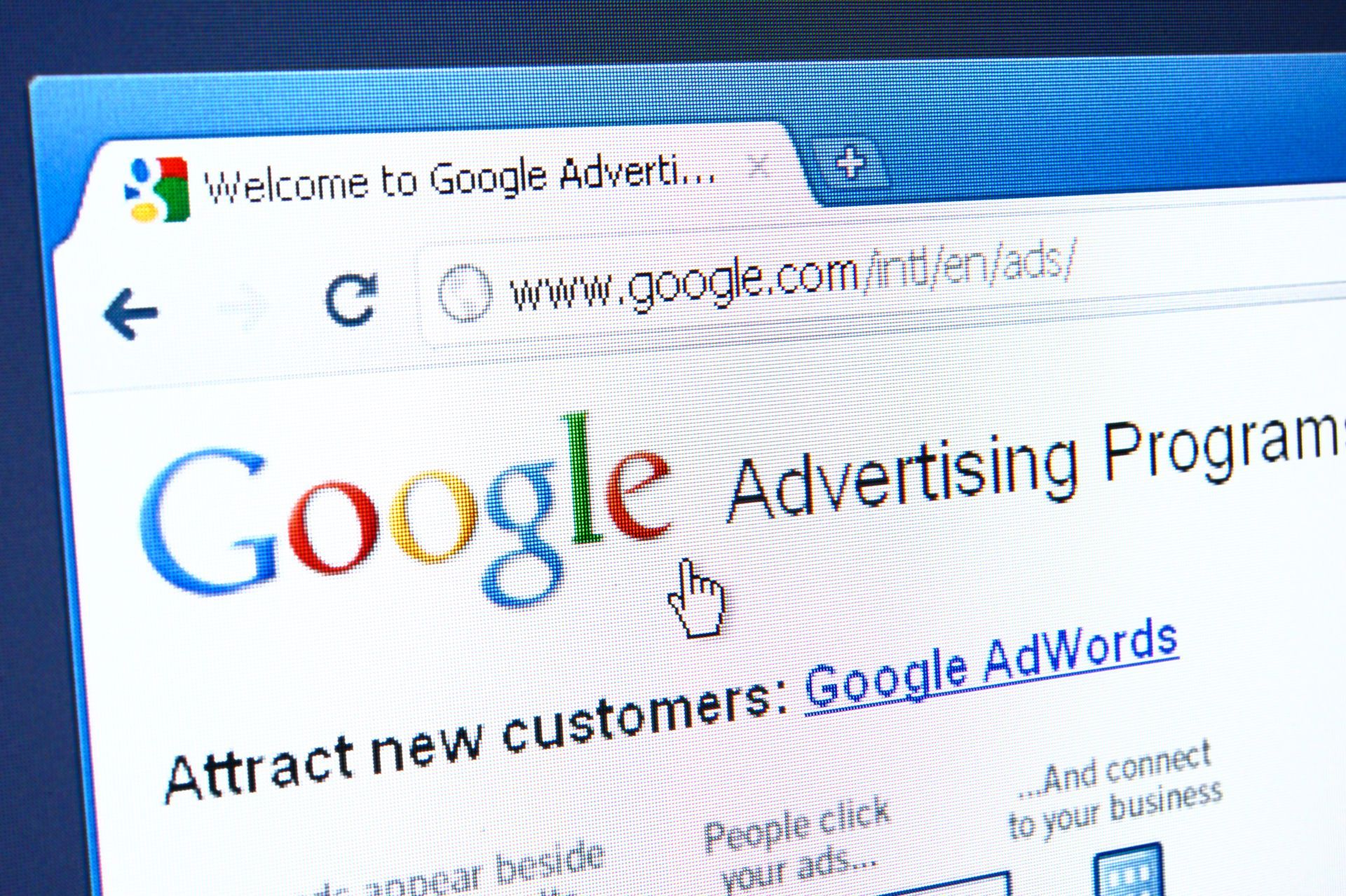
For cleantech companies navigating everything from early-stage funding to policy hurdles, it’s tempting to think that visibility online can take a back seat to more “serious” priorities. But here’s a truth you can’t ignore: over 80% of all search traffic still goes through Google. If you’re building a cleantech company and you aren’t thinking about how Google fits into your strategy—from search to visibility to partnerships—you’re leaving opportunity on the table. In fact, Google isn’t just a gatekeeper of web traffic. It’s an investor, a technology enabler, a storytelling platform, and a backer of the climate tech ecosystem. Let’s break down the ways Google matters—and how cleantech companies can take advantage. 1. Google Search Is Still the Front Door Whether an investor hears about you at a pitch event or a policymaker sees you mentioned in a report, they’re likely to do the same thing next: Google you. Google remains the dominant search engine, with over 80% market share globally. If you don’t show up in relevant search results—if your company doesn’t have visibility for your category, your solution, or even your founder’s name—you’re adding friction to every interaction. Your website, media coverage, case studies, and content marketing need to be discoverable. And that means building with Google in mind, whether it’s through SEO, structured data, or simply updating your Google Business profile. 2. Google Is Actively Investing in Clean Energy Infrastructure Google isn’t just helping others go green—it’s putting billions into building data centers that co-locate with renewable energy projects. According to Canary Media, Google is developing industrial campuses powered by clean energy and backed by $20 billion in investment by 2030 . These campuses will pair hyperscale data infrastructure with utility-scale renewables—effectively baking cleantech into the future of digital services. For startups focused on grid stability, storage, or renewable generation, this means a huge potential partner—not just in mission, but in infrastructure. If you’ve got a scalable clean energy solution, Google might be your next biggest customer. 3. Google for Startups Accelerator: Climate Change If you’re an early-stage cleantech company, Google offers more than visibility—it offers hands-on help. Their Startups Accelerator : Climate Change program pairs selected startups with technical and business mentors from across Google to tackle their biggest obstacles. What’s unique is the program’s flexibility. Founders aren’t required to use Google Cloud, and there’s no financial investment or equity exchange. Instead, companies gain access to product teams, UX experts, and cloud infrastructure support. In a space where capital is hard to come by and technical support is scarce, that’s a big deal. 4. Google Is Building the Cleantech Ecosystem Through initiatives like Startups for Sustainable Development, Google is actively partnering with founders who are working on impact-focused solutions. This includes clean energy, food systems, circular economy models, and water conservation. These programs offer more than mentorship—they also include access to funding opportunities, product teams, and global exposure. It’s not just about visibility. It’s about alignment. Google wants to see companies succeed that can help accelerate sustainability goals at a global scale—and they’re putting their weight behind it. 5. Sustainability Is Core to Google’s Own Mission Google isn’t new to this space. Its own climate commitments include achieving net-zero emissions across its operations and value chain by 2030 . It also aims to run on 24/7 carbon-free energy in every grid where it operates. That kind of commitment has ripple effects. If your solution helps achieve decarbonization in buildings, energy, or supply chains, you’re aligned with one of the largest and most influential companies on Earth. So What Should Cleantech Companies Do With Google? Here’s how to think about Google—beyond just search: • Optimize for visibility: Your SEO, content, and press strategy should help you show up where it matters. • Engage in ecosystem programs: Apply to accelerators like Google for Startups: Climate Change. • Monitor Google’s clean energy strategy: Their infrastructure decisions may create new markets for your technology. • Collaborate on data and AI: As Google builds AI tools to support sustainability, companies solving climate problems with data have new ways to plug in. • Think like a storyteller: Google platforms like YouTube are still the dominant spaces for video storytelling. If you’re not using them, your competitors probably are. Final Thought: Google Isn’t Just a Platform, It’s a Partner For cleantech companies, Google isn’t just the search engine where people find you. It’s the investor, partner, and amplifier that can put your work in front of the right audience—and plug you into the global effort to decarbonize. So yes—Google matters. In fact, it might matter more than most cleantech founders realize. Because if your goal is to change the world, it helps to show up where the world is looking.
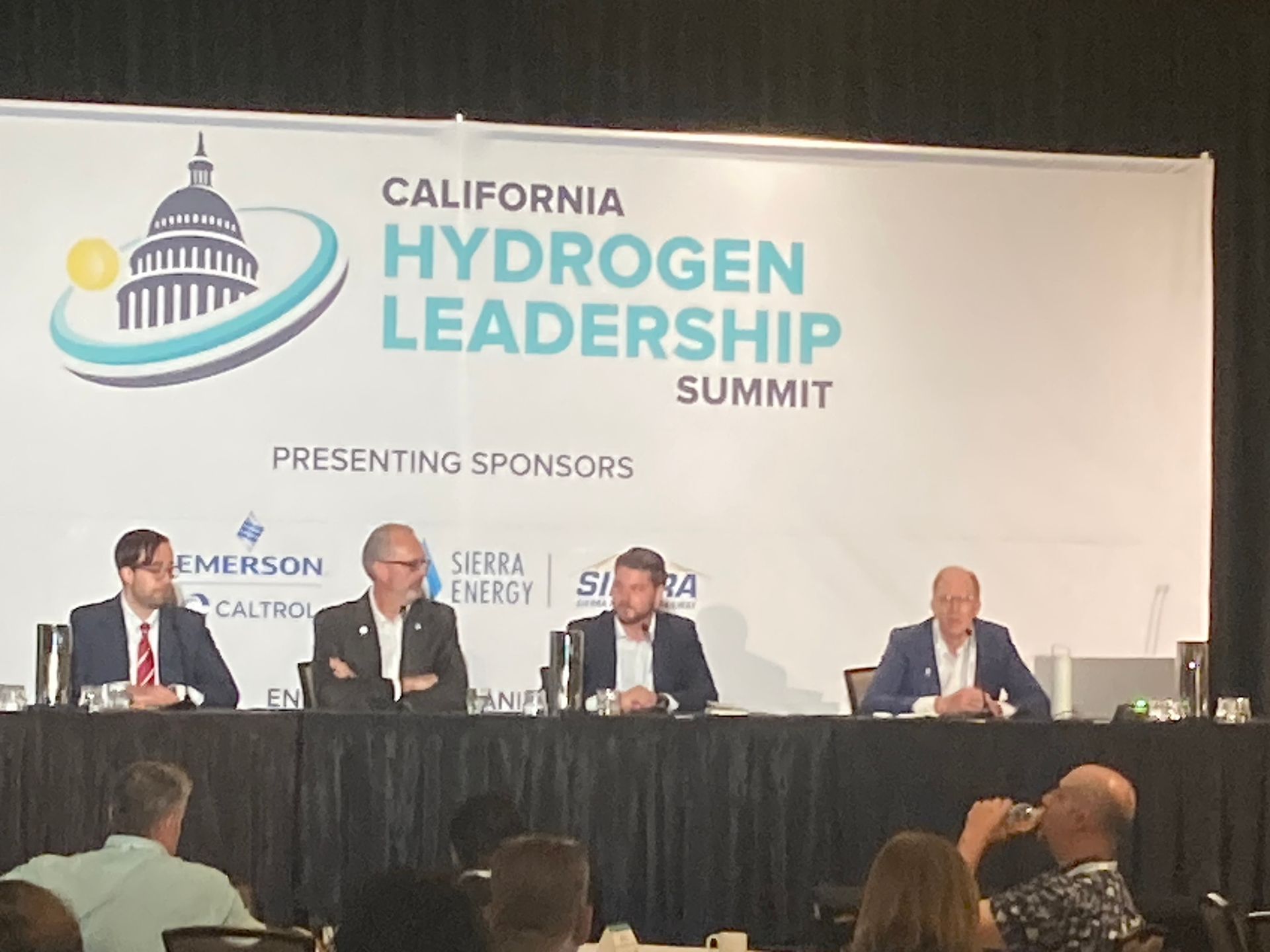
Is There Any Oxygen For America’s Hydrogen Industry? The saying, “As goes California, so goes the nation,” is an apt description of our nation’s hydrogen future. Listening to the leaders, legislators, regulators, utilities, car and truck manufacturers and project developers doing the spade work for the industry over the last two days at the California Hydrogen Leadership Summit in Sacramento, there was a mix of hope and hype amidst the unstable air turbulence created by the administration in Washington, DC. Chicken And The Egg Hydrogen’s paradox is that consumers and shipping companies aren’t buying hydrogen-powered cars and trucks because the infrastructure doesn’t exist yet to support them, and projects to create infrastructure and fueling aren’t getting funded because few people are buying hydrogen-powered vehicles. This is why the industry is so nervous about Congress repealing the Inflation Reduction Act’s 45V tax credits. Like with electric vehicles and solar panels, only the government is large enough to create an industry with societal benefits. No hedge fund or cluster of venture capital firms is large enough to fill this gap, and tax credits under 45V signal to private investors that investing in hydrogen carries less risk. The counterargument is that these nascent industries should be able to stand on their own without government support, which conveniently ignores that the government funds the roads we drive on, the internet was created by the Department of Defense during the Vietnam War, and the oil industry still benefits from a 25% production tax credit that Congress passed in 1916, which is one of the reasons gas doesn’t cost $8/gallon. I don’t think any of those arguments hold sway with an administration that seems hellbent on reclaiming a revisionist history of a glorious 20th-century energy past. There was a general resignation that hydrogen development tax credits will be on hold for at least the next four years. The project developers I spoke with were universally more optimistic about the ability to prove their technology concepts in Europe, where there’s a greater appetite for cleaner fuels. Those Swinging For The Fences Are Striking Out Fifteen years ago, there was tremendous hype around converting algae into a negative carbon-emitting transportation fuel. Oil majors invested millions into research, and while some of that was PR window dressing, there were high hopes that within a decade, hundreds of millions of gallons of algae fuel would replace fossil-based gas and diesel. The dream never panned out, and today, algae’s best use cases--wastewater treatment and cosmetics—— are far less grandiose. I mention this because some of the conference attendees shared the overexuberant belief that a full-on hydrogen-fueled economy was just around the corner, even though there’s no large-scale pipeline distribution system in the United States and very few fueling stations (and little to no federal money to support either). The most promising projects were much smaller in scale. HyWatts, for instance, demonstrated a small hydrogen system that could be used as a backup energy source for industries that need 24/7 uptime, like data centers that are currently reliant on diesel generators in emergencies.

There’s a gloom hanging over the community of people working tirelessly for a more habitable planet right now. Clean energy loans are being suspended or terminated. High interest rates and political uncertainty are keeping cleantech investor wallets shut. University research grants are being defunded. And yet—on World Environment Day—we’re reminded why your work matters more than ever. I’ve got news for you: it’s not the first time the cleantech landscape has looked like a Mad Max movie, and it won’t be the last. When the housing market crashed the U.S. economy in 2007-2008, private cleantech funding tumbled too. After Fox News turned solar startup Solyndra into a dirty word in 2010, politicians ran for cover. Since then, trillions of public and private dollars have been invested in technologies to clean up our planet, and more will be forthcoming because the only thing sure about markets and elections is that they will ebb and flow. What’s steadfast, though, is your commitment to a mission to leave behind a healthier planet than the one you inherited. That’s what World Environment Day is all about—remembering that this mission transcends politics, funding cycles, and quarterly reports

If you’re building a cleantech company, you might think your most important job is to perfect your technology. But if you want to attract investors, customers, and partners, there’s something just as crucial: your story. Stories are how humans make sense of the world, and your brand’s story needs structure. It needs a story arc. Without it, your marketing will feel random, disconnected, and forgettable. With it, you can guide your audience on an emotional journey that makes them believe not just in your product but also in your mission. Here’s why understanding the story arc—and particularly, the Hero’s Journey—is critical for any cleantech company trying to stand out. What Is a Story Arc? A story arc, sometimes called a narrative arc, is the blueprint that structures a story from beginning to end. The classic arc has five main parts: 1. Exposition – Introduce the setting, characters, and conflict. 2. Rising Action – Build tension as obstacles emerge. 3. Climax – Reach the most intense point of the conflict. 4. Falling Action – Begin to resolve the conflict. 5. Resolution – End the story with clear outcomes. This structure is fundamental because it mirrors how humans experience challenges in real life, making your story relatable and engaging. The Hero’s Journey: A Timeless Framework Perhaps the most famous story arc is The Hero’s Journey, outlined by Joseph Campbell. Across mythology, literature, and cinema, stories follow a familiar path: • A hero ventures into the unknown. • They face trials and temptations. • They receive help, suffer setbacks, and ultimately transform. • They return, changed, and capable of improving their world. The Hero’s Journey taps into universal human emotions—hope, fear, perseverance—which is why it remains so powerful across cultures. For cleantech companies, you are not the hero—your customer is. Your technology is the tool that helps them overcome a pressing problem, whether it’s reducing emissions, saving energy, or improving resilience. Why Story Arcs Matter in Cleantech Marketing The technical complexity of cleantech solutions can create a communication barrier. Engineers want to explain how their technology works. But customers and investors care about what your technology helps them achieve. As Techtarget notes in their marketing analysis, using a story arc helps you build a cohesive narrative that resonates emotionally rather than just logically. • Instead of “We developed a 98% efficient thermal battery”, • Tell a story: “For communities struggling with unreliable energy access, we offer a solution that stores renewable power through the night—so children can study after sunset and hospitals can operate without interruption.” Your technology becomes the sword the hero (your customer) uses to win the battle. Emotional Engagement Is Essential Data alone won’t win hearts or wallets. A good story moves people. The Courtside Group emphasizes that emotionally engaging narratives help audiences see themselves in the journey you’re describing. When your audience feels something—whether it's hope, urgency, or excitement—they are far more likely to act: invest, purchase, share, or champion your cause. How to Use the Story Arc for Your Cleantech Brand Here’s a simple framework to incorporate the Hero’s Journey into your cleantech marketing: • Exposition: Your target audience’s big challenge (e.g., increased costs, government regulation, pollution control, water quality standards, environmental toxins harmful to human health, etc.) • Rising Action: Highlight the obstacles (cost, old infrastructure, policy gaps, bad PR, supply chain problems, outdated data, foreign competition, etc.). • Climax: Introduce your customer’s moment of decision—they must change or suffer the consequences. • Falling Action: Show how your solution helps them overcome barriers. • Resolution: Paint a vision of the better world they create by adopting your technology. When you align your brand with your customer's quest for a better future, you transform your pitch from a technical explanation into an irresistible story of progress and possibility. Final Thoughts In a crowded cleantech marketplace, it’s not enough to have great science—you need a great story. Understanding the story arc, and framing your customer as the hero of their journey, helps your audience see that your innovation is not just another piece of technology, but the key to solving the problems they care most about. Because at the end of the day, people don’t remember specs. They remember the story you told—and how it made them feel.
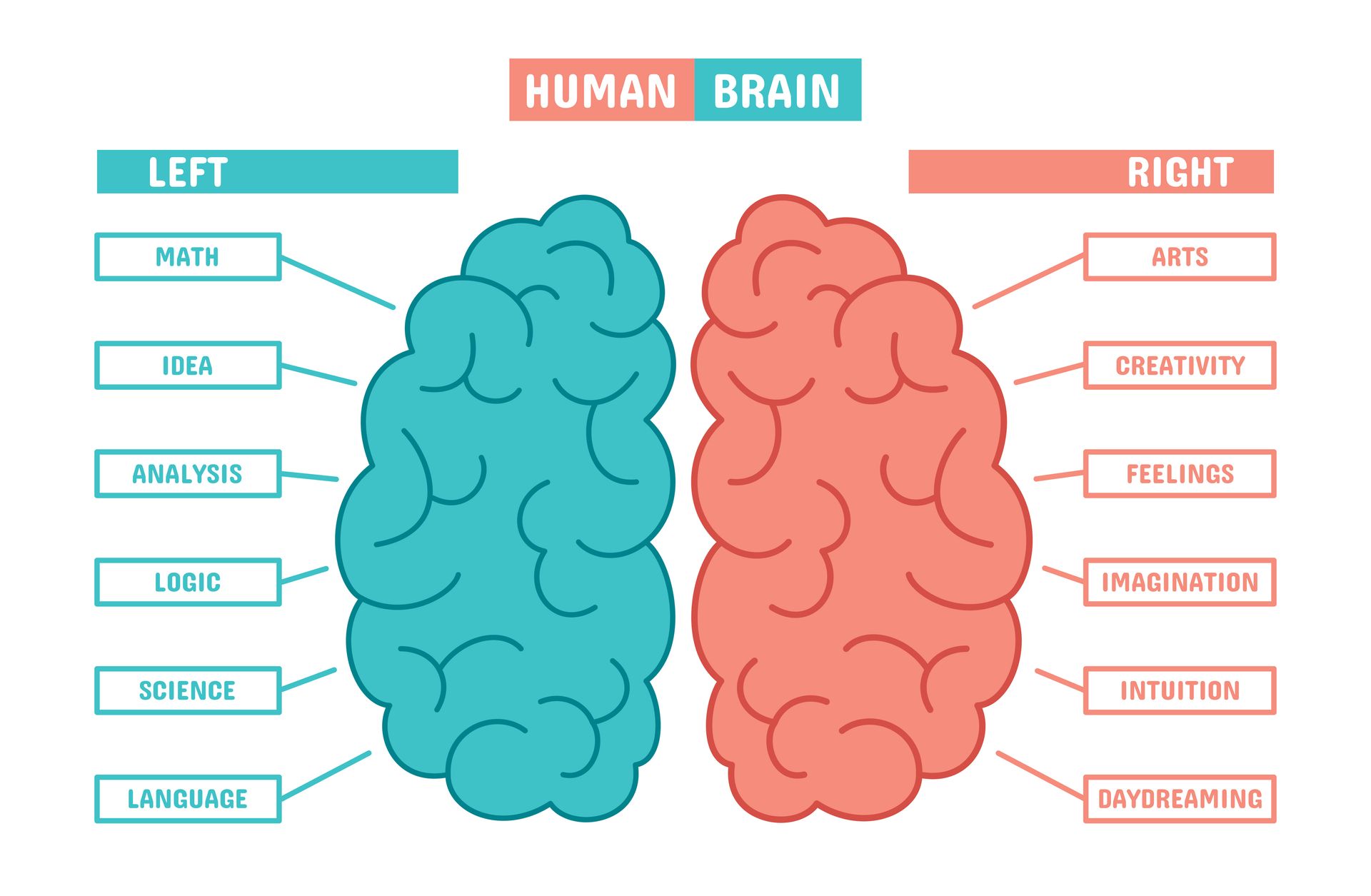
If you’re a cleantech founder or engineer preparing to pitch, there’s a good chance your deck is heavy on data, dense on technical detail—and light on story. You’re not alone. Most startups in this space are led by deeply technical teams who are passionate about what’s inside the black box. But here’s the truth: investors and customers don’t buy the inner workings of your technology—they buy the problem you solve. And if your pitch leads with specs instead of stakes, you risk losing your audience before you ever get to the impact. So how do you know if your cleantech pitch is too left-brained? And what should you be saying instead? Left-Brained Thinking Loves the Build. Right-Brained Thinking Sells the Story. As a founder or engineer, you’re conditioned to describe how your innovation works—novel chemistry, improved efficiencies, optimized designs. But the person across the table? They want to know why it matters. Startups often bury the lead by focusing on technical features rather than clearly articulating the problem they solve. That’s a critical mistake. Your audience isn’t sold on performance—they’re sold on purpose. Start With the Problem, Not the Process Investor and cleantech pitch expert Jonathan Tudor advises founders to lead with the pain point. What’s broken? What’s at stake if it doesn’t get fixed? Why now? In his article Pitching Tips from an Expert Clean Tech Investor , Tudor reminds us that “investors are bombarded with technologies—what stands out is a clear, urgent problem that your solution addresses.” That means your first few slides shouldn’t explain what your company is, but what the world looks like without it. If your company builds low-temperature geothermal systems for commercial real estate, don’t start with the heat pump specs. Start with this: “70% of commercial HVAC systems are outdated, leaky, and inefficient, costing the average building owner $1.3 million annually. In California alone, that wasted energy increases CO2 emissions by 7%.” That’s a pitch anyone—investor or customer—can understand and care about. Good Pitch Decks Tell a Clear, Human Story Your pitch isn’t just a technical briefing. It’s a narrative with a protagonist (your customer), a problem (the inefficiency, cost, or climate threat), and a solution (your technology). In Building a Cleantech Pitch Deck , experts recommend spending the first third of your deck on the problem and why it matters. That’s the emotional hook. That’s what opens wallets. A compelling story doesn’t just say “we have a 20% efficiency gain.” It says: “Utility-scale solar developers lose millions annually to storage bottlenecks. We’re helping them recover that revenue.” It’s not about simplifying your science—it’s about contextualizing it for people who don’t live in your lab. Investors Invest in People—Not Just Products In How to Approach Pitching to Climate-Tech Investors , the message is clear: investors aren’t just betting on your tech—they’re betting on you. Your story, your motivation, and your ability to understand the customer’s world matter more than your patent count. Share why you are tackling this specific problem. What did you see that others missed? What drew you to this work? That emotional clarity is what will differentiate you from other technically competent teams. How to Rebalance Your Pitch If your current pitch is feeling too analytical, here’s how to bring balance: • Start with a strong problem statement. Focus on what’s broken, not what you’ve built. • Use plain language. Avoid acronyms, chemistry terms, and excessive metrics in the first five minutes. • Explain impact in the real world. Who wins if you succeed? Who loses if you don’t? • Tell your “why.” Share your motivation, not just your method. • Save the deep tech for later. Technical validation can come in due diligence or appendix slides—not the opening. Final Thought: The Best Pitch Speaks Both Languages No one is asking you to dumb down your innovation. What we’re asking—and what investors want—is to lead with clarity, context, and consequence. Once people understand the problem and buy into your story, then they’ll care about how your technology works. So before your next pitch, ask yourself: “Am I describing a product… or am I solving a problem?” Because when you show your audience that you understand their world, they’ll be more eager to fund what you’ve built in yours.

Building an effective sales funnel is essential for cleantech companies looking to attract investors and customers. Unlike traditional consumer products, cleantech solutions take longer to scale and bring to market, requiring a sales funnel that prioritizes long-term relationships over quick conversions. For investors, the goal is to build trust and demonstrate a compelling growth trajectory. For customers, it's about education, engagement, and positioning your company as a go-to solution. A well-structured sales funnel ensures that both groups stay informed, engaged, and motivated to take action at the right time. Below, we’ll explore how to structure a sales funnel tailored to cleantech businesses using best practices and insights from industry experts. Understanding the Sales Funnel A sales funnel is the structured path prospects take from initial awareness to commitment—an investment, a contract, or a product purchase. According to Salesforce , an effective funnel moves leads through four key stages: 1. Awareness – Introduce your company and its value. 2. Interest – Engage with prospects through personalized content. 3. Decision – Provide compelling reasons to invest or buy. 4. Action – Seal the deal through direct outreach or offers. The funnel must focus on relationship-building for cleantech companies, as investors and customers often need extensive time to evaluate and commit. Step 1: Get on Their Radar Before you can nurture leads, you need to capture attention. Cleantech companies should create high-value content that attracts both investors and customers. Video is eye candy, but not everything should be a song and dance number suitable for TikTok. And today, it’s perfectly acceptable not to have high production values as long as your viewers can understand you. If you want to dig into the power of video in our decision-making, there's no end to neuroscience studies on the subject. There are a myriad of other ways to drive interest. For instance, graphics and images can be as powerful as video. The key is making it interesting, informative (and dare I say) entertaining for your audience because that’s how you get them to follow you on social media or visit your website, where they can share their email address. Early-stage cleantech companies often forget that the most crucial goal of a website is getting the viewer to take action. When CEOs ask me how to tell whether they have a good website, my response is usually, “How many leads did it generate?” Don’t get me wrong, copy, design, and user experience are near the top of the list of ‘must haves’ when a cleantech company hires a firm to build a website, but if the viewer scrolls your homepage and then leaves, it’s a wasted opportunity. Getting on an investor's or potential customer's radar is only the beginning. Staying on it is more difficult in a media-saturated world. The term "content marketing" gets waved around like a magician's wand, but the trick is repeatability. You can pull a rabbit out of a hat, but no one will pay to watch the same trick twice. That's why cleantech companies must find creative ways to capture eyeballs continually. One video or picture from a conference is equivalent to casting one fishing line in the ocean. You might catch a fish, but you increase your chances exponentially when you cast hundreds of digital lines in the infinity of the internet. Pro tip: Rather than just sending updates about your company, position yourself as a thought leader by providing industry insights and market trends. Step 2: Engage and Build Credibility Once prospects are aware of your company, engaging them in meaningful ways is the next step. Philip VanDusen emphasizes the importance of relationship-building through consistent, value-driven engagement. • Get their opinions and insights with surveys – Investors and customers want to be heard. Regular surveys can provide insights while making prospects feel involved in your journey. • Schedule insider briefings with key stakeholders to provide tailored updates and answer questions directly instead of large, impersonal webinars. • Celebrate their successes – Investors and customers want to be aligned with successful ventures. Highlight their achievements in newsletters, blogs, and social media. As the saying goes, "Kindness costs nothing." Investing in your company is more than a transaction; it's a partnership. The same applies to your first customers taking a chance on your technology. Make your audience feel like you care about them. Cleantech companies are mission-driven, not technology-driven. That means you need buy-in from your audience. They have to want you to succeed, and that transcends widgets. Step 3: Content Is More Than Information One of the biggest mistakes cleantech companies make is relying on reciting facts, events, and awards to engage prospects. While credibility is essential, investors and customers need compelling stories, not just technical specs. According to Harel Asaf , content must: • Highlight real-world impact – Investors and customers want tangible results, not just theoretical benefits. Case studies, testimonials, and real-world data make a stronger case. • Use compelling visuals – Well-designed infographics, videos, and interactive tools can explain complex concepts more effectively than text-heavy reports. • Create curiosity – Instead of overwhelming prospects with information, give them just enough to want more, leading them deeper into your funnel. Step 4: Guide Prospects Toward Action Think of your content as a funnel, and that funnel should naturally lead investors and customers toward making a decision. Your audience's first decisions should have a low barrier to entry. Asking for their email address is ideal because it gets them on the road to saying "Yes" to bigger asks down the road, and it gives you control over what types of content they will see and when they will see it, unlike social media algorithms that can be capricious and parsimonious. Every piece of content, whether a Substack article or social media post, should have a call to action. Typically, this will lead to a landing page where you can capture email addresses. Your CTA should match the level of trust and commitment already established in earlier stages. When asking for an email address, provide something of value in exchange. For investors, offer them a glimpse into your technology behind a hidden online wall: a downloadable PDF or a short explainer video. You can even let them schedule a one-on-one Zoom meeting. Prominently display a call to action on the homepage of your website, and by prominently, I don't mean at the bottom of the page. We read in a "Z" pattern, so make sure your invitation is on the top horizontal line. If you give away a free report, course, or ebook, send the viewer to a landing page rather than having pop-up offers interrupt their experience. Repeated pop-up invitations on websites are cringy, slow down your website's load time, and annoy viewers, so use them sparingly. Sometimes, you need to reach out to your audience personally and ask if you can add them to your email list, which shows respect for their time and is an early indicator of whether they might turn into an investor or customer. Additionally, subscribe to newsletters from potential investors and customers to stay informed on their needs and interests, allowing for strategic, timely follow-ups and deeper relationship-building. Final Thoughts Building a cleantech sales funnel requires time, strategy, and consistent relationship-building. Unlike traditional sales funnels, cleantech companies must focus on educating, engaging, and maintaining long-term trust with investors and customers. By structuring your funnel with high-value content, personalized engagement, and compelling storytelling, you can guide prospects from awareness to action.
